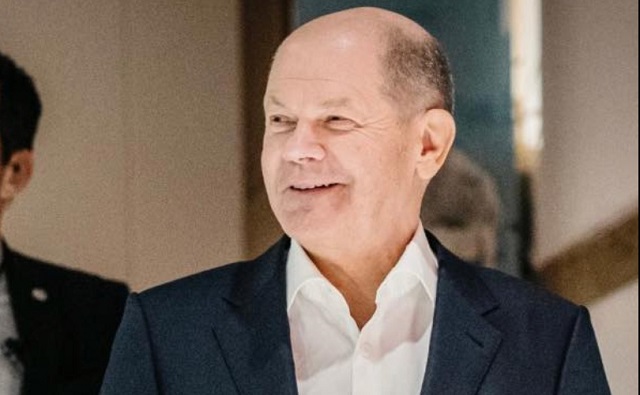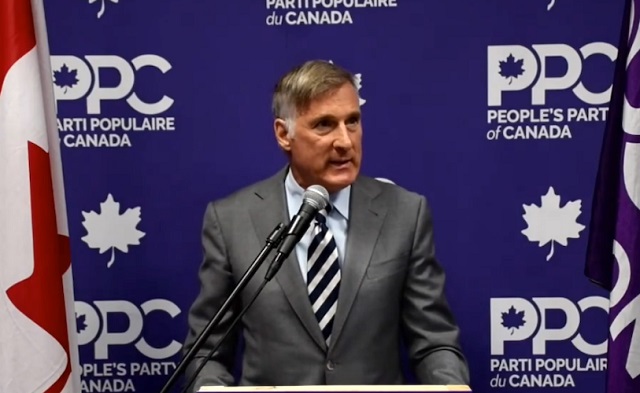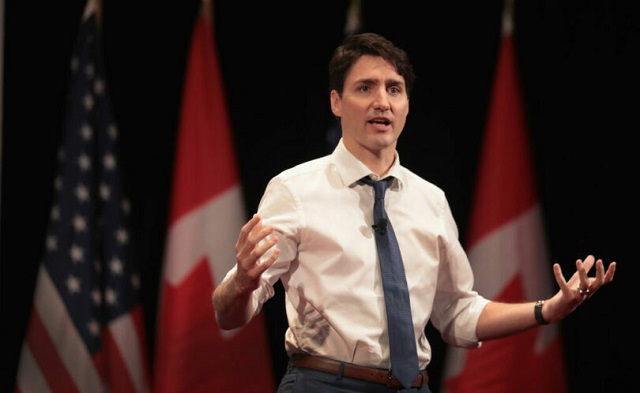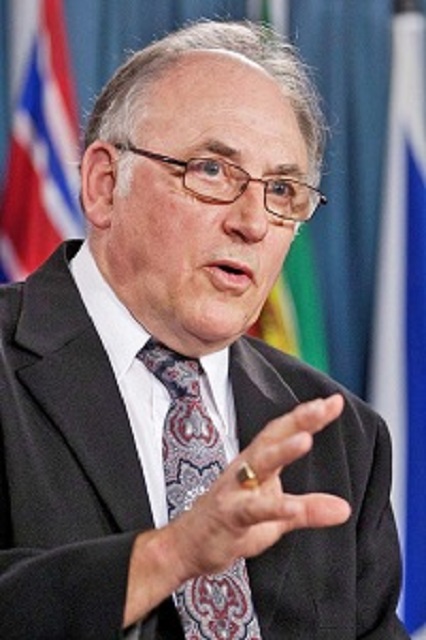Alberta
Massive funding boosts kick off Alberta’s transition to fully comprehensive care
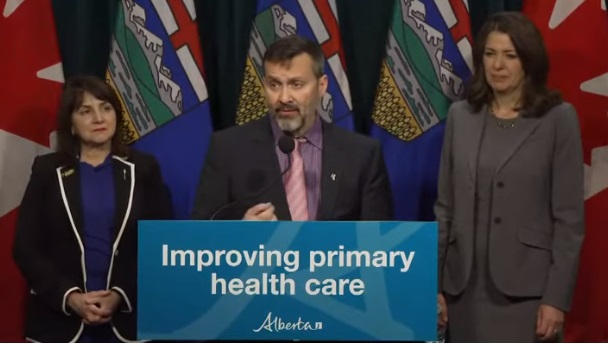
Dr. Paul Parks, president, Alberta Medical Association
Canada signs more than $1 billion bilateral agreement with Alberta to improve health care over three years
From: Health Canada
This investment will increase access to a primary health provider, reduce wait times for mental health services, and provide greater access to health data.
Canadians want and deserve a health care system that provides timely access to health services whenever and wherever they are needed. That is why the Government of Canada is investing over $200 billion over 10 years, which includes $25 billion for tailored bilateral agreements with provinces and territories, to support the Working Together to Improve Health Care for Canadians plan.
Today, the Honourable Mark Holland, Canada’s Minister of Health, and the Honourable Adriana LaGrange, Alberta Minister of Health, announced a bilateral agreement to invest $1.06 billion over the next three years, marking a crucial step in a 10-year plan for collaboration. This includes $285 million per year in new funding by the Government of Canada and continuing $70 million per year in previously-announced mental health and substance use funding, which will help accelerate efforts already underway in Alberta to improve health care access and services.
Through this federal funding, Alberta has a three year action plan to deliver improvements to its health care system by 2026, including:
- Increasing access to primary care providers for Albertans and reducing emergency department visits that could have been addressed by a family medicine office. This will be achieved by expanding team-based care and enhancing virtual care, and increasing the number of appointments available to patients.
- Funding community providers to increase diagnostic imaging capacity in the province, reducing wait times for CT scans and MRIs.
- Improving patient care by enhancing Albertans’ ability to access digital health services and their own health information by implementing e-referral services and accelerating the secure exchange of data across the health system.
- Expanding integrated services for youth mental health services in the province through school-based and community day programs, and offering more supports for youth with complex needs as they transition into adult services.
- Reducing median wait times for community mental health and substance use services by establishing new and improving existing treatment spaces, along with prioritizing culturally appropriate Indigenous community supports.
- Ensuring that First Nations and Métis people have access to high-quality, culturally safe care that meets their unique health needs. This will be achieved through dedicated funding for initiatives to enhance access to primary care in Indigenous communities, and funding for communities to develop health workforce capacity and infrastructure to improve the collection and use of health information and data.
- Improving access to health care for underserved Albertans, including through expanded community pilots that bring testing services to rural, remote and Indigenous communities, advancing French-language health services, and greater clinical care for women.
Progress on these initiatives and broader commitments will be measured against targets which Alberta will publicly report on annually.
Through this new agreement, Alberta will improve how health information is collected, shared, used and reported to Canadians; streamline foreign credential recognition for internationally educated health professionals; facilitate the mobility of key health professionals within Canada; and fulfill shared responsibilities to uphold the Canada Health Act to protect Canadians’ access to health care that is based on need, not the ability to pay.
Recognizing the significant disparities in Indigenous health outcomes, the Government of Canada and the Government of Alberta also commit to meaningfully engage and work together with Indigenous partners to support improved access to quality and culturally appropriate health care services. Alberta’s action plan is informed by continued engagement with its Indigenous partners and recent discussions involving the federal government. All orders of government will approach health decisions in their respective jurisdictions through a lens that promotes respect and reconciliation with Indigenous Peoples.
Alberta and the federal government will continue working together to improve access to health services and deliver tangible results to all residents across the province, including responding to the needs of Indigenous and other underserved and disadvantaged populations.
Quotes
“Our government is working together with provinces and territories to get Canadians the healthcare they need. This agreement is an important step in our collaboration with Alberta to take measurable actions to transform our health care system. The funding will help improve access to primary care and create better mental health services in Alberta. Together, we will continue working to achieve better health outcomes for all Canadians.”
The Honourable Mark Holland
Minister of Health of Canada
“Mental health is health, and through this agreement, we will be working with Alberta to integrate mental health and substance use care as a full and equal part of our universal health care system. This agreement will strengthen the capacity of family health providers, reduce substance use harms, and expand virtual care for youth to improve access to quality and timely mental health care and substance use supports. Together, we must ensure that all Canadians have access to supports and services for their mental health and well-being – when they need them, wherever they need them.”
The Honourable Ya’ara Saks
Minister of Mental Health and Addictions and Associate Minister of Health of Canada
“Alberta’s government is taking a serious look at the way health care is being delivered in our province. This is why we are refocusing our health care system to ensure Albertans have access to timely care, when and where they need it. This initial funding from the federal government is a good start and will support our shared health priorities of expanding access to primary care across the province and especially in our Indigenous communities, supporting our health care workers, improving access to quality mental health, and modernizing our health systems.”
The Honourable Adriana LaGrange
Minister of Health of Alberta
“Alberta’s government is supporting Albertans to improve their mental health and recover from the deadly disease of addiction as we build out the Alberta Recovery Model and refocus our provincial healthcare system. We are doing this by increasing access to CASA Mental Health Classrooms across the province, building more bed based mental health treatment capacity for youth, and improving access to mental health and addiction treatment services in communities. This initial funding from the federal government will offer some support to these made in Alberta initiatives as we build a better system of mental health and addiction care for Albertans.”
The Honourable Dan Williams
Minister of Mental Health and Addiction of Alberta
Quick facts
- The Working Together investment includes $25 billion for tailored bilateral agreements with provinces and territories, a guaranteed 5% Canada Health Transfer (CHT) increase for the next five years—amounting to $17.5 billion—and a one time CHT $2 billion top-up to address urgent needs of emergency rooms and paediatric hospitals delivered in June 2023. Combined, these investments provide provinces and territories the flexibility to address the unique needs of their populations and geography, and accelerate health care system improvements.
- Budget 2023 outlined the Government of Canada’s plan to invest over $200 billion over 10 years, including $46.2 billion in new funding for provinces and territories, to improve health care for Canadians. Within this funding, $25 billion is allocated through tailored bilateral agreements to address the unique needs of their populations and geography in four shared health priorities:
- expanding access to family health services, including in rural and remote areas;
- supporting health workers and reducing backlogs;
- increasing mental health and substance use support; and
- modernizing health care systems with health data and digital tools.
- All provinces and territories are already making considerable investments to advance progress in all four of these priority areas, and the new federal funding is complementing and expanding those efforts.
- As part of these bilateral agreements, provinces and territories are developing action plans that outline how funds will be spent and how progress will be measured to demonstrate to Canadians that improvements are occurring in Canada’s health care system. Alberta’s initial 3-year Action Plan can be found here.
- Budget 2017 committed $11 billion over 10 years in federal funding to provinces and territories to improve access to home and community care, and mental health and addictions services for Canadians. Bilateral agreements were signed with provinces and territories to access the first six years of funding. The final four years of funding for mental health and addictions are included in the new Working Together bilateral agreements.
- The Government is also working with provinces and territories to implement a second bilateral agreement focused on helping Canadians age with dignity close to home, with access to home care or care in a safe long-term care facility. This agreement will include the remaining $2.4 billion over four years to improve access to home and community care from Budget 2017; and the $3 billion over five years for long-term care from Budget 2021 to apply standards of care in long-term care facilities and help support workforce stability.
———-
From the Province of Alberta
This funding will be an essential transitional step to ensure doctors can continue to provide this care as we rapidly transition to a funding model that supports fully comprehensive care.”
Dr. Paul Parks, president, Alberta Medical Association
New funding to stabilize primary health careStabilization funding is coming soon as Alberta’s government continues working to improve primary health care across the province. The government is pulling out all the stops to stabilize, strengthen and improve Alberta’s primary health care system. Additional funding of $200 million over two years will improve access to family physicians and help ensure primary health care is available for every Albertan when and where they need it. This funding is enabled through the new Canada-Alberta Health Funding Agreement with the federal government. The agreement represents a total of approximately $1.1 billion in additional health care funding over three years for shared priorities.
Stabilization funding is an important transitional measure identified through work under the memorandum of understanding (MOU) between the minister of health and the Alberta Medical Association (AMA), signed earlier this fall. The AMA has been advocating for family physicians and rural generalists through its work under the MOU. Alberta’s government will continue to engage with the AMA as it works to develop a new, sustainable physician comprehensive care model, which will also dictate how this additional funding will be distributed. In addition to work between the government and the AMA, the Comprehensive Care Task Force will, in the new year, provide a first draft of recommendations that will include additional short-term stabilization actions to help family doctors continue to practise comprehensive care and bridge the gap until a new physician comprehensive care model is developed. These short-term actions will:
Alberta’s government is committed to finalizing a sustainable physician comprehensive care model that will address the concerns of family physicians and rural generalists and ensure Albertans can access the care they need.
Other recently announced supports for primary health care include:
Related information |
Alberta
Political parties will be part of municipal elections in Edmonton and Calgary pilot projects
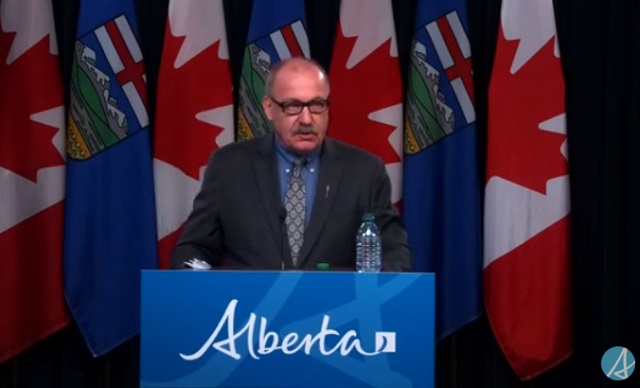
Strengthening Alberta’s local elections
Alberta’s government is introducing legislation to ensure Albertans can rely on transparent, free and fair elections, and municipally-elected officials have clearer accountability measures.
In a democratic society, Albertans expect their local elections to be free and fair, and their elected officials to be held to account by clear rules that govern their local councils. The Municipal Affairs Statutes Amendment Act proposes amendments to the Local Authorities Election Act (LAEA) and the Municipal Government Act (MGA) to add greater transparency to local election processes and ensure local councils and elected officials continue to remain accountable to the citizens who elected them.
“Our government is committed to strengthening Albertans’ trust in their local governments and the democratic process that elects local leaders. The changes we are making increase transparency for Alberta voters and provide surety their votes will be counted accurately. We know how important local democracy is to Albertans, and we will work with local authorities to protect and enhance the integrity of local elections.”
Local Authorities Election Act
Albertans expect free and fair elections and that’s why it’s important we strengthen the rules that govern local elections. To strengthen public trust in local elections, Alberta’s government will eliminate the use of electronic tabulators and other automated voting machines. All Albertans should be able to trust the methods and results of local elections; requiring all ballots to be counted by hand, clarifying rules and streamlining processes for scrutineers will provide voters greater assurance in the integrity of the results.
All eligible Albertans should be able to vote in local elections without impediment. Alberta’s government will limit the barriers for eligible voters to cast a ballot by expanding the use of special ballots. Currently, special ballots can only be requested for very specific reasons, including physical disability, absence from the municipality, or for municipal election workers. By expanding the use of special ballots, the government is encouraging more voter participation.
Amendments in the Municipal Affairs Statutes Amendment Act would increase transparency in local elections by enabling political parties at the local level. Political parties would be enabled in a pilot project for Edmonton and Calgary. The act will not require candidates to join a political party in order to run for a local or municipal office, but will create the opportunity to do so.
In addition, proposed changes to the Local Authorities Election Act would allow municipalities the option to require criminal record checks for local candidates, thus increasing transparency and trust in candidates who may go on to become elected officials.
Municipal Government Act
The role of an elected official is one with tremendous responsibility and expectations. Changes proposed to the Municipal Government Act (MGA) will strengthen the accountability of locally elected officials and councils. These include requiring mandatory orientation training for councillors, allowing elected officials to recuse themselves for real or perceived conflicts of interest without third-party review and requiring a councillor’s seat to become vacant upon disqualification.
If passed, the Municipal Affairs Statutes Amendment Act will also unlock new tools to build affordable and attainable housing across Alberta. Proposed amendments under the MGA would also create more options for municipalities to accelerate housing developments in their communities. Options include:
- Exempting non-profit, subsidized affordable housing from both municipal and education property taxes;
- Requiring municipalities to offer digital participation for public hearings about planning and development, and restricting municipalities from holding extra public hearings that are not already required by legislation; and
- Enabling municipalities to offer multi-year residential property tax exemptions.
Municipal Affairs will engage municipalities and other partners over the coming months to hear perspectives and gather feedback to help develop regulations.
Quick facts
- The LAEA establishes the framework for the conduct of elections in Alberta municipalities, school divisions, irrigation districts and Metis Settlements.
- The MGA establishes the rules governing the conduct of local elected officials once on council, as well as the overall administration and operation of municipal authorities in Alberta, including any policy those authorities may wish to implement.
Related information
Alberta
Alberta official reveals ‘almost all’ wildfires in province this year have been started by humans

From LifeSiteNews
Alberta Minister of Forestry and Parks Todd Loewen said his department estimates that most of the province’s wildfires this year are man-made and not caused by ‘climate change.’
Alberta officials have announced that almost all fires in 2024 are believed to have been caused by humans despite ongoing claims that “climate change” is to blame.
On April 24, Alberta Minister of Forestry and Parks Todd Loewen revealed that his department estimates that most of the province’s wildfires this year are man-made and not caused by “climate change” as claimed by mainstream media and politicians.
“We expect that almost all of the wildfires we’ve experienced so far this year are human caused, given the point we’re at in the season and the types of weather we’re seeing,” Loewen stated.
Already, Alberta has put out 172 wildfires this year, and 63 are actively burning. However, Loewen did not seem overly alarmed, instead warning Albertans to watch their local fire bans and restrictions to reduce the high number of man-made wildfires.
“I urge you to assess your property for wildfire danger and take any preventive action you can to address these risks,” he said.
“This includes breaking up fuel sources that could ignite a structure, removing trees in close proximity to your home, and properly maintaining your gutters and roofs to rid the materials that could easily ignite such as leaves and dry needles,” Loewen added.
Loewen’s announcement comes just weeks after Alberta Premier Danielle Smith promised that arsonists who ignite wildfires in Alberta will be held accountable for their crimes.
“As we approach the wildfire season, it is important to understand that 67% of wildfires in Alberta are started by people,” she explained.
“If you start a wildfire, you can be charged, fined, and held liable for all costs associated with fighting the wildfire,” Smith added.
Smith made the comments after last year revealing that most of the wildfires in her province (500 of the 650) were caused by humans and not “climate change,” as has been pushed by the legacy media and opposition politicians.
“All I know is in my province we have 650 fires and 500 of them were human caused,” she said, “so we have to make sure that when people know that when it’s dry out there and we get into forest fire season that they’re being a lot more careful because anytime you end up with an ignition that happens it can have devastating consequences.”
The Alberta government has also created an ad campaign highlighting the fact that most fires are caused by humans and not “climate change,” as many left-leaning politicians claim.
As reported by LifeSiteNews last year, Smith ordered arson investigators to look into why some of the wildfires that raged across the vast expanse of the province had “no known cause” shortly after they spread.
Indeed, despite claims that wildfires have drastically increased due to “climate change,” 2023 research revealed that wildfires have decreased globally while media coverage has spiked 400 percent.
Furthermore, many of the fires last spring and summer were discovered to be caused by arsonists and not “climate change.”
Royal Canadian Mounted Police (RCMP) have arrested arsonists who have been charged with lighting fires across the country, including in the Yukon, British Columbia, and Alberta.
In Quebec, satellite footage also showed the mysterious simultaneous eruption of several blazes across the province, sparking concerns that the fires were a coordinated effort by arsonists.
Despite the overwhelming evidence, Prime Minister Justin Trudeau and mainstream media continue to claim that the fires are unprecedentedly dangerous and caused by “climate change” in an attempt to pass further regulations on natural resources.
The reduction and eventual elimination of the use of so-called “fossil fuels” and a transition to unreliable “green” energy has also been pushed by the World Economic Forum (WEF) – the globalist group behind the socialist “Great Reset” agenda – an organization with which Trudeau and some in his cabinet are involved.
-

 Censorship Industrial Complex1 day ago
Censorship Industrial Complex1 day agoNow We Are Supposed to Cheer Government Surveillance?
-
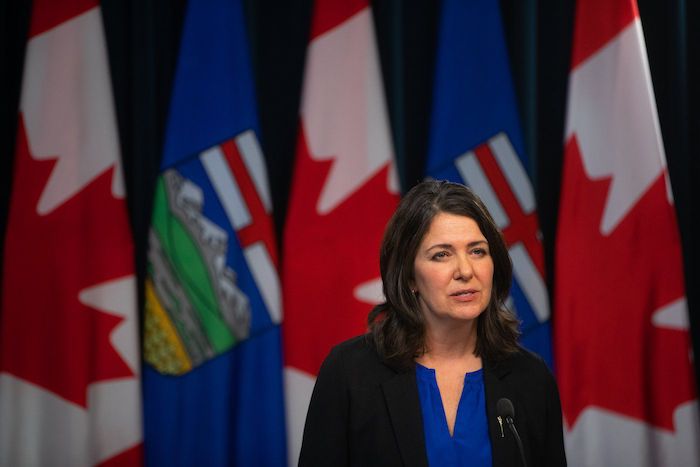
 Alberta1 day ago
Alberta1 day agoRed Deer Doctor critical of Alberta’s COVID response to submit report to Danielle Smith this May
-

 conflict1 day ago
conflict1 day agoCol. Douglas Macgregor torches Trump over support for bill funding wars in Ukraine and Israel
-

 Business10 hours ago
Business10 hours agoDon’t be fooled by high-speed rail
-

 COVID-192 days ago
COVID-192 days agoInquiry shows Canadian gov’t agencies have spent $10 million on social media ads for COVID jabs
-

 Alberta10 hours ago
Alberta10 hours agoActivity-Based Hospital Funding in Alberta: Insights from Quebec and Australia
-
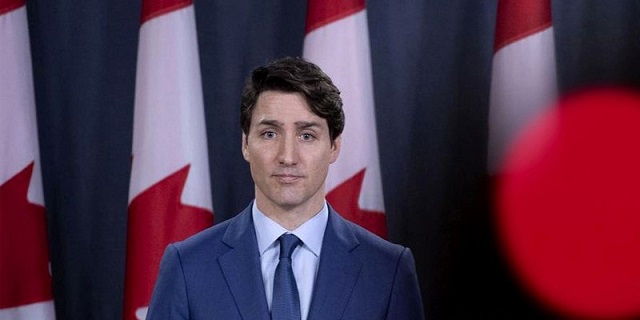
 Business2 days ago
Business2 days agoFederal government’s ‘fudget budget’ relies on fanciful assumptions of productivity growth
-

 Health1 day ago
Health1 day agoTransgender activists are threatening the author of scathing UK report on child ‘sex changes’


